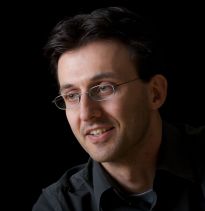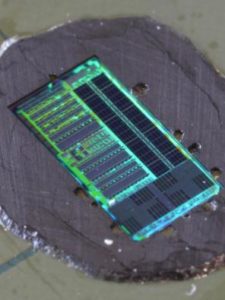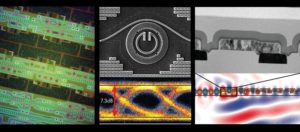Building the First Microprocessor that Communicates using Light
Forbes Rd
Lexington, MA 02421
USA
Photonics Society and co-sponsoring NES/OSA and Aerospace and Electronic Systems Society
Prof. Miloš A. Popović – Department of Electrical and Computer Engineering, Boston University
Four decades on from the pioneering first steps at Bell Labs, microphotonics is at a transition from a few components to large-scale integrated systems on chip. In the near term, this can address severe bottlenecks seen in complex digital electronic systems – through integration with relatively simple but efficient photonic systems. In the longer term, tight integration and control means complex passive, active and nonlinear photonic structures enabling novel functions will become practical and may enable a new generation of integrated systems-on-chip for analog signal processing, computation, metrology and sensing.
In this talk, I will describe work on a new CMOS technology that enabled the simultaneous integration of millions of advanced CMOS transistors and thousands of photonic devices side-by-side on a single chip for the first time. The approach, “zero change CMOS photonics”, bucked the trend in the photonics community of tailoring fabrication to design, instead pursuing a “design for manufacture” philosophy to photonic device design within fixed advanced-node CMOS microelectronics technology. It produced the efficient electronic-photonic systems of unprecedented integration scale, including record-energy optical transmitters, receivers and links, and resulted in the demonstration of the first microprocessor that communicates using light, with significant implications for computer architecture.
I will describe the approach, some of the device innovations and the system demonstrations they made possible, and will address some of the implications of this work in computing and its potential in other domains including datacom, quantum information processing, RF front ends and LIDAR.
Miloš Popović is on the faculty of Electrical Engineering at Boston University since July 2016. Previously he was at the University of Colorado Boulder from 2010 to 2016. He received his B.Sc.E. in Electrical Engineering from Queen’s University, Canada in 1999, and the M.S. and Ph.D. degrees from Massachusetts Institute of Technology in 2002 and 2007. His research interests include first-principles theory and design of integrated photonic devices and circuits, CMOS photonics integration, nano-optomechanical devices based on light forces, mechanical motion and acoustic wave engineering, and nonlinear and quantum integrated photonics. He is author or coauthor of over 25 patents and 150 journal and conference papers. In 2012, he was named a Fellow of the David & Lucile Packard Foundation. He is co-founder and advisor at Ayar Labs.
Directions to Forbes Rd Lincoln Laboratory: (from interstate I-95/Route 128)
Take Exit 30B onto Marrett Rd in Lexington – Merge into left lane
Make the first Left onto Forbes Rd.
Proceed straight through the small rotary and enter the parking lot.
The entrance is on your right.
To assist us in planning this meeting, please pre-register at http://www.ieeeboston.org/Register/.



